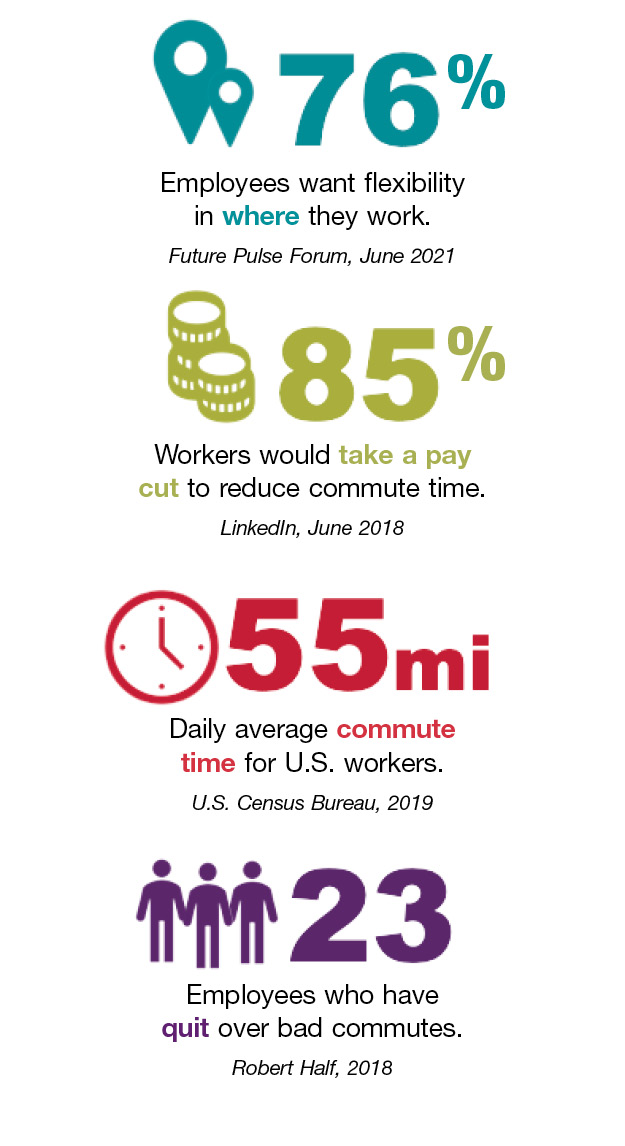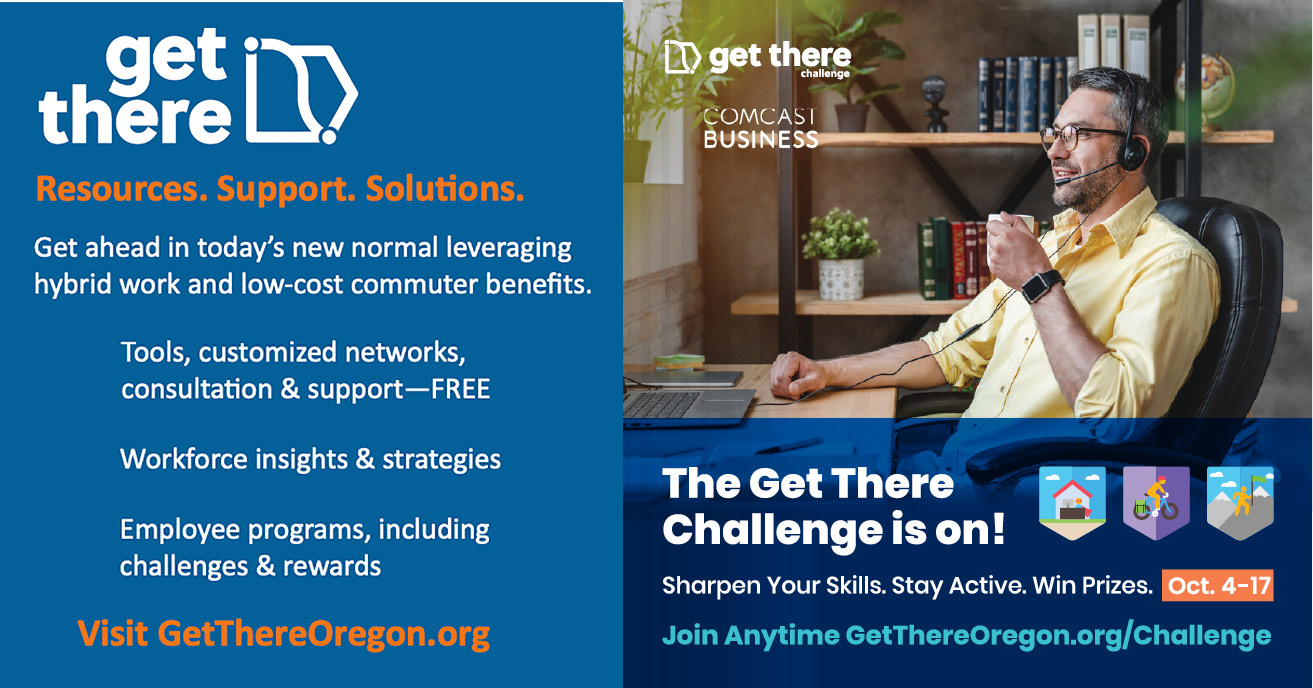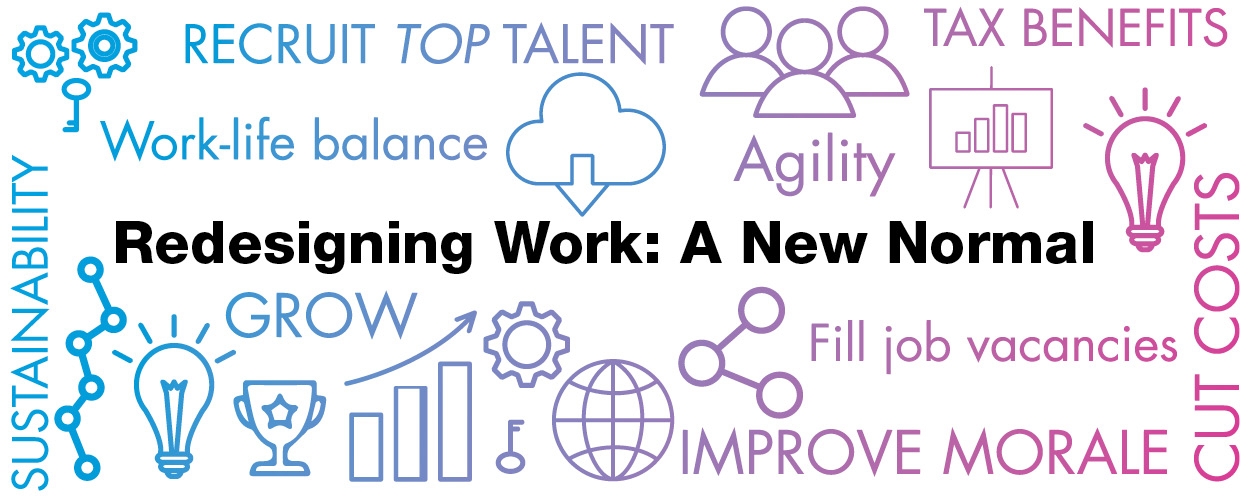Brand Story – A mass experiment has taken place across virtually all sectors of the economy. Albeit rushed and unplanned, it has spurred new mindsets around work and a revolutionary redesign of long-prevailing norms and practices, benefitting employers and employees alike.
A big question for leaders is how to create sustained, thriving workplaces that capture this newfound potential.
“Rethinking how, where, and when we work has illuminated a multitude of possibilities and opportunities,” says Stephanie Millar, Get There program manager at the Oregon Department of Transportation. “We’re learning better is possible. Doing things differently can achieve better circumstances and outcomes for operational performance, employees, and society.”
As leaders reshape work norms and practices, hybrid work and commuter benefits can help optimize workplaces through better employee experiences.
Employee experience matters 
What is employee experience, exactly? Definitions differ broadly, but simply put, employee experience relates to everything employees encounter, observe, and feel during their journey with an organization.
So why does employee experience matter? How employees perceive and experience work can impact their engagement and performance levels.
Global business consultancy Gallup has encouraged employers to focus on fostering positive employee experience noting that “pay is no longer enough to attract and retain the best people.”
Flexibility—specifically the ability to work remotely—ranks as a top desired benefit among professional workers in today’s workforce surveys. A recent study found that 42% of current remote workers said they would look for a new job if their employer doesn’t offer long-term options.
“The flexibility of remote work yields many benefits that enhance employee experience from reducing workplace distractions for improved productivity to allowing greater work-life balance,” Millar explains. “Critically, too, remote work reduces commute pain which employees were feeling more acutely than ever prior to COVID.”
Millar added, “The commute for many employees is an integral part of their work experience. Bad commutes can and do hurt work experience with negative consequences for employees and their employers.”
Productivity and opportunity loss due to commute pain
Notwithstanding the COVID-19 crisis, employee commutes have steadily gotten longer over the last decade as traffic congestion and delays grew.
• U.S. workers lost nearly an extra hour a week to commutes in 2019, the equivalent of one full-time workweek over a year
• The typical commuter added 20 more minutes a week—17 hours each year—to their commute compared to a decade ago
• More workers commute from farther away due, in part, to the lack of affordable housing

Longer commutes don’t just cost employees time, but money, too. The hard costs of commuting—gas, auto maintenance, parking, etc.—add up.
The Bureau of Labor Statistics estimated that the average household spent over $2,000 on gas and motor oil alone in 2019.
Plus, there’s the opportunity cost of the commute—the sacrificed income-earning potential of time spent commuting. In a new study released in August, LendingTree projected that restarting the daily commute will cost Portland metro workers more than $6,950 in lost time.
It’s not just employees who “pay” the cost of commuting either. Bad commutes present a range of negative impacts on employers:
• Lost productivity: painful commutes can drain employees before the work day starts, plus they take time away from work and other pursuits that promote better employee wellness
• Hiring headwinds: A 2019 national study by Scoop revealed prospective bad commutes convinced 62% of job seekers to not apply for jobs
• Costly employee turnover: HR consultancy Robert Half found in a 2018 study that 23% of workers had quit jobs because of a bad commute
“Traffic congestion is already resurfacing in Oregon’s urban centers. As offices reopen and traffic increases, commutes are likely to get longer,” says Millar. “Across the state, too, many workers are commuting from farther away, resulting in longer and often more painful commutes due to distance.”
“It’s critical to factor in the commute when redesigning work to encompass the entire employee work experience,” Millar continues. “By connecting workers to hybrid work and transportation options employers can alleviate commute pain, plus realize a broad range of mutually shared productivity gains and financial savings.”
Shared commute and recruitment solutions
Many employers require onsite workers, particularly in manufacturing, transportation and distribution, and leisure and hospitality. Acute labor shortages are widespread today throughout these industry sectors as businesses struggle to ramp-up and maintain operations.
Employers are often forced to recruit from outside their immediate local areas, posing long commutes that deter job candidates. Shared commute solutions, such as vanpooling and carpooling, can reduce the distance divide that separates employers from a larger, more readily available workforce.
“No doubt the pandemic has presented a myriad of onsite worker recruiting challenges. Yet, prior to COVID, many employers were already drawing more onsite workers from farther away. It’s a national trend playing out across Oregon driven largely by the lack of affordable housing,” Millar says. “Shared commute solutions can be an effective recruiting and retention tool for employers by lightening long commutes for onsite workers.”
Get There offers free online vanpool and carpool matching services for employees and employers. Plus, assistance is available to aid employers in setting up vanpools or shuttle routes through Commute with Enterprise, which operates throughout the state.
Millar notes that Get There and partners can help employers and employees take advantage of pre-tax savings on qualifying vanpool costs, as well as transit expenses. Employees can withhold up to $270 of pre-tax income from their monthly pay towards the cost of vanpooling and/or transit. Employers can save about 7.5% in payroll taxes on employee withholdings.
October Get There Challenge:
Build workforce skills and habits
Tap into the Get There Challenge Oct. 4-17 to build workforce skills and habits for higher-performing hybrid work and better employee experience.
Employees can unlock knowledge and skill-building achievements to earn badges and points towards prizes. Leveraging game-like elements provides a unique user experience, making it fun to pursue goals and giving positive motivation to learn and do.
“Gamification expands the range of possibilities for participation and learning,” Millar says. “It’s a powerful motivational tool to promote employee engagement.”
Any employee 18 or older who works in Oregon is eligible to participate by creating or using an existing account at GetThereOregon.org.
Organizational networks can be set up for free by contacting [email protected] to track employee participation and progress on organization-wide metrics such as badges earned, miles reduced, and CO2 reductions. Employer promotional tools are available online at GetThereOregon.org.

Brand stories are paid content articles that allow Oregon Business advertisers to share news about their organizations and engage with readers on business and public policy issues. The stories are produced in house by the Oregon Business marketing department. For more information, contact associate publisher Courtney Kutzman.






